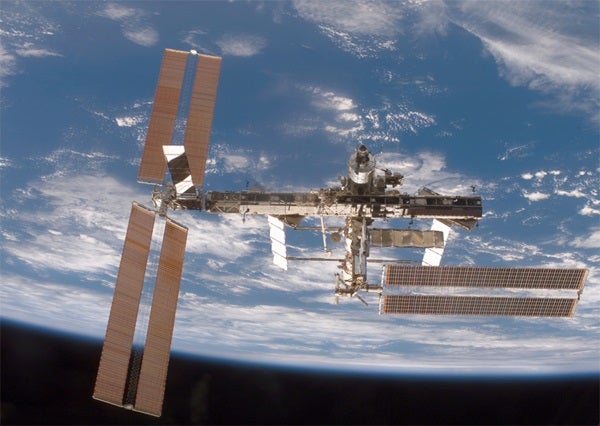Space shuttle Discovery and its seven-member crew lifted off from NASA’s Kennedy Space Center at 7:43 p.m. EDT March 15 to deliver the final set of power-generating solar array wings and a new crew member to the International Space Station.
Discovery’s STS-119 flight is carrying the space station’s fourth and final set of solar array wings, completing the station’s truss, or backbone. The arrays will provide the electricity to fully power science experiments and support the station’s expanded crew of six in May. The 13-day mission will feature three spacewalks to help install the S6 truss segment to the starboard, or right, side of the station and deploy its solar arrays. The flight also will replace a failed unit for a system that converts urine to potable water.
Shortly before launch, Commander Lee Archambault thanked the teams that helped make the launch possible.
“It’s truly an honor to be part of this team representing NASA, the nation, and the international partners,” Archambault said. “See you in a couple of weeks.”
Pilot Tony Antonelli and Mission Specialists Joseph Acaba, Steve Swanson, Richard Arnold, John Phillips and Japan Aerospace Exploration Agency astronaut Koichi Wakata join Archambault on STS-119. Wakata will replace space station crew member Sandra Magnus, who has been aboard the station for more than 4 months. Wakata will return to Earth during the next station shuttle mission, STS-127, targeted to launch in June 2009.
Former science teachers Acaba and Arnold are now fully trained NASA astronauts. They are making their first journey to orbit on the mission and will step outside the station to conduct critical spacewalking tasks.
Discovery’s launch was postponed March 11 after a leak associated with the gaseous hydrogen venting system was detected during fueling. Technicians rebuilt and replaced seals and other components associated with the system. No leaks were detected during the Sunday’s fueling.










